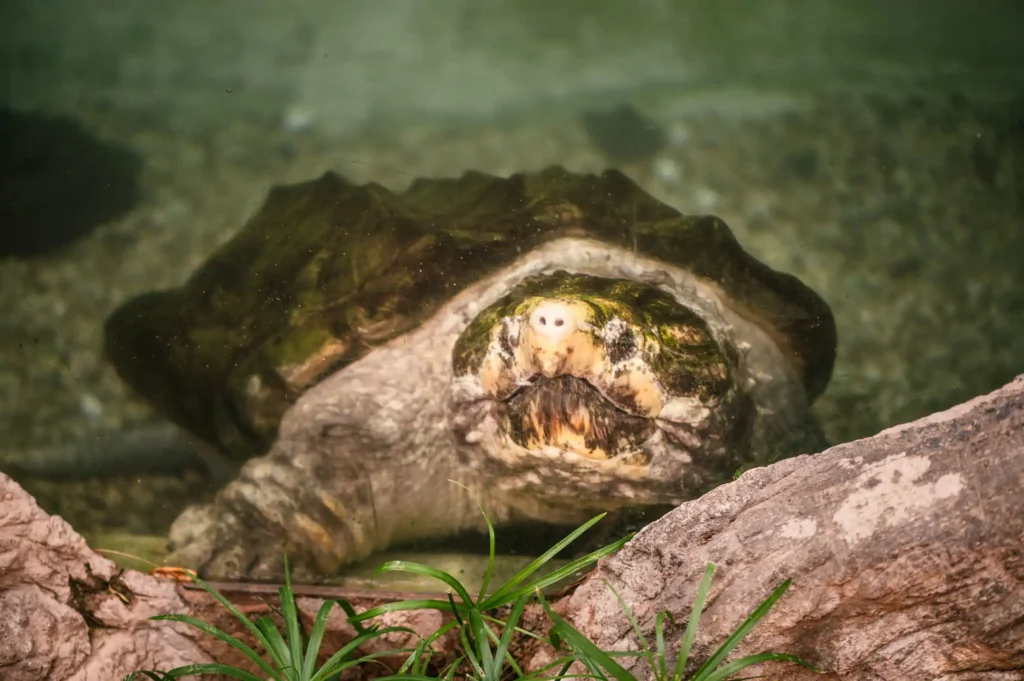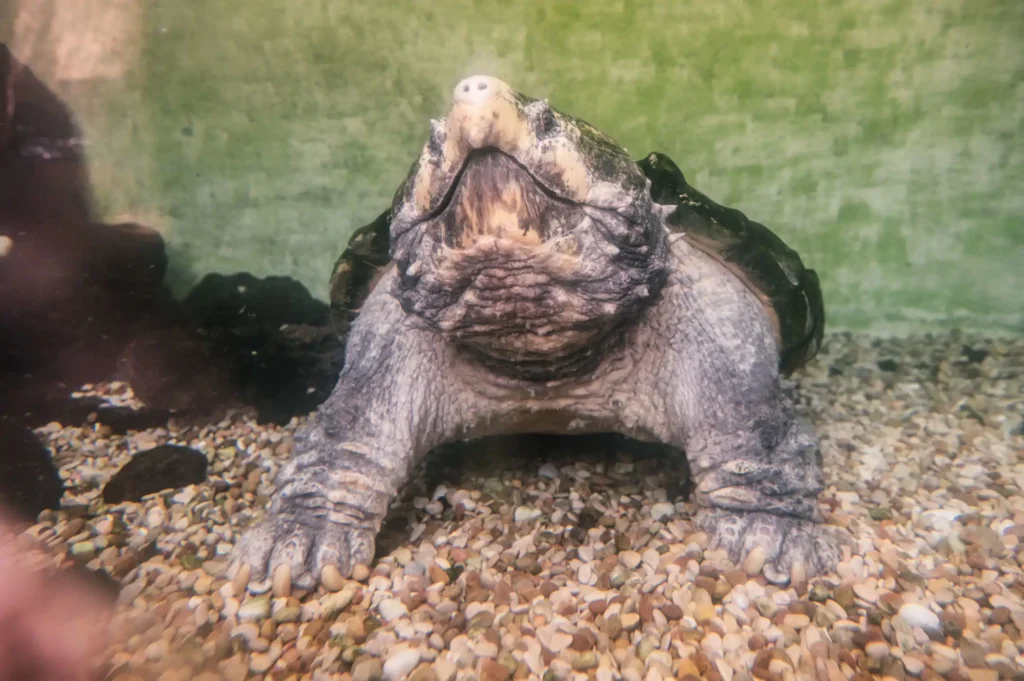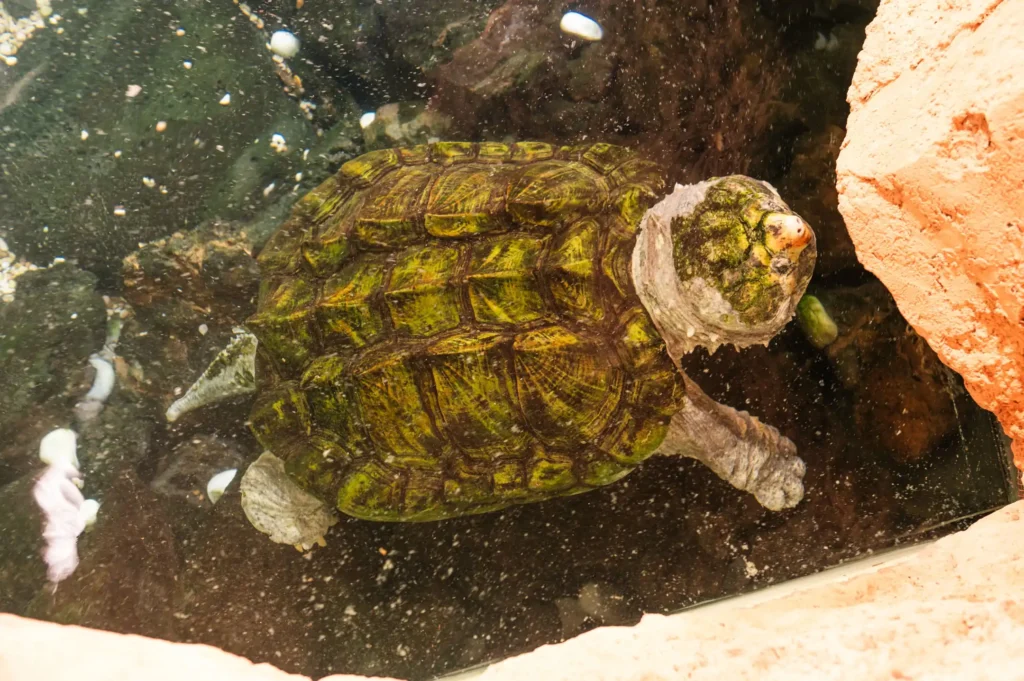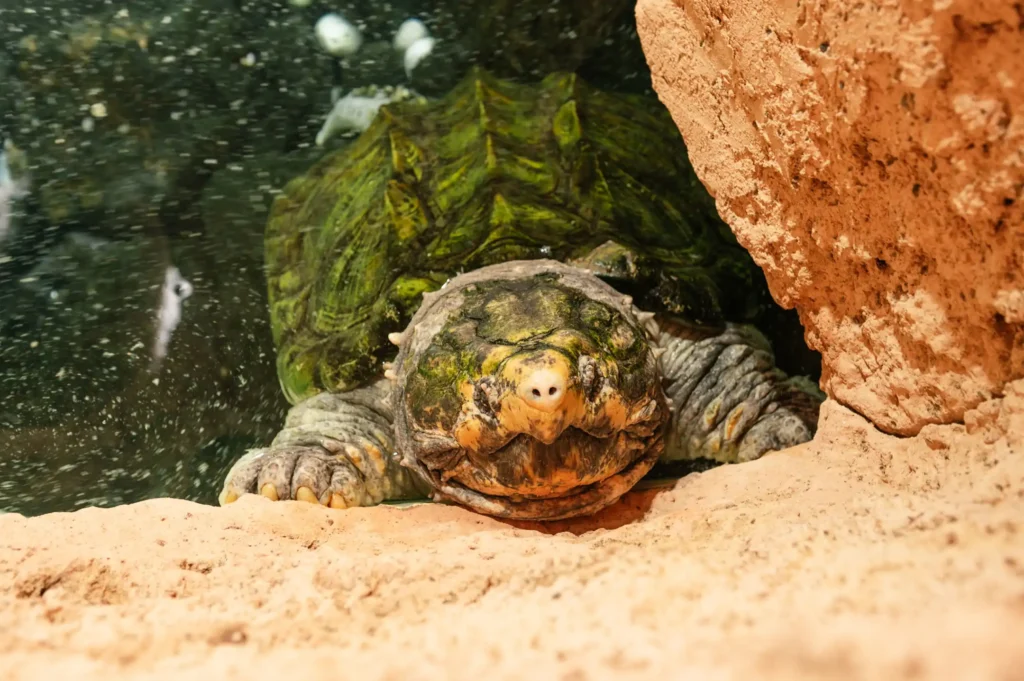Distribution:
It’s limited to North America (Estados Unidos) and is found in the Mississippi Valley all the way to the North of Kansas. It’s also been discovered in rivers like the Suwannee and other rivers from Florida to eastern Texas.
Description:
It’s a large turtle that can grow up to 75cm and weigh around 80kg. Specimens as heavy as 110kg have been documented. It has a large head and a tail the same length as its shell. They have very powerful jaws that need to be treated with precaution as they can cause serious damage. It’s one of the largest turtles living in freshwater. The shell has three sharp peaks spreading from the front to the back and they are usually grey, brown, black or olive green and tend to be covered in algae to help them camouflage into their background and hunt with more ease.
This turtles hunting technique is very peculiar. It has a reddish worm like tongue that it uses as bait, hiding in dark places with its mouth open wiggling the red appendix. With its natural camouflage the prey mistake this turtle for a rock or a tree trunk and come closer to investigate the red “worm”, falling into its trap.
The macrochelys eyes are surrounded by fleshy star shaped plaques and have been found to be very complicated and subdivided.
Diet:
The alligator turtle is mainly carnivorous, feeding on fish, fresh water crabs and lobsters, clams, snakes and in captivity eat nearly any type of meat.
Habitat:
This turtle usually inhabits rivers, lakes, wetlands or any other place with still water with less current and warmer temperatures as this specie is not so resistant to cold temperatures. They like muddy, overgrown places to hide.
Size:
They can grow up to 75-80cm and weigh from 80 to 110 kilos. They have a life expectancy of around 20 to 70 years.
Reproduction:
They reach sexual maturity at 11 to 13 years old, the males generally larger than females.
Their mating season is from September to March, laying eggs once a year. They dig their burrows with their back legs and tend to prefer to lay the eggs in daylight although they are mainly nocturnal animals. They can lay up to 40 nearly spherical eggs that are around 35 to 51mm. To incubate them correctly they need a temperature of approximately 28ºc and 90% humidity. They hatch in 100 to 140 days.
Distribution:
This specie is almost exclusively aquatic, only stepping on dry land to lay its eggs.
When picked up this turtle doesn’t make sudden movements or try to escape but stays very still with its mouth open, ready to attack. We have to be very careful with these jaws as they are very powerful and could cause a lot of damage. This turtles are mainly nocturnal and it’s not recommended to have more than one male of this specie in the same captivity enclosure.





